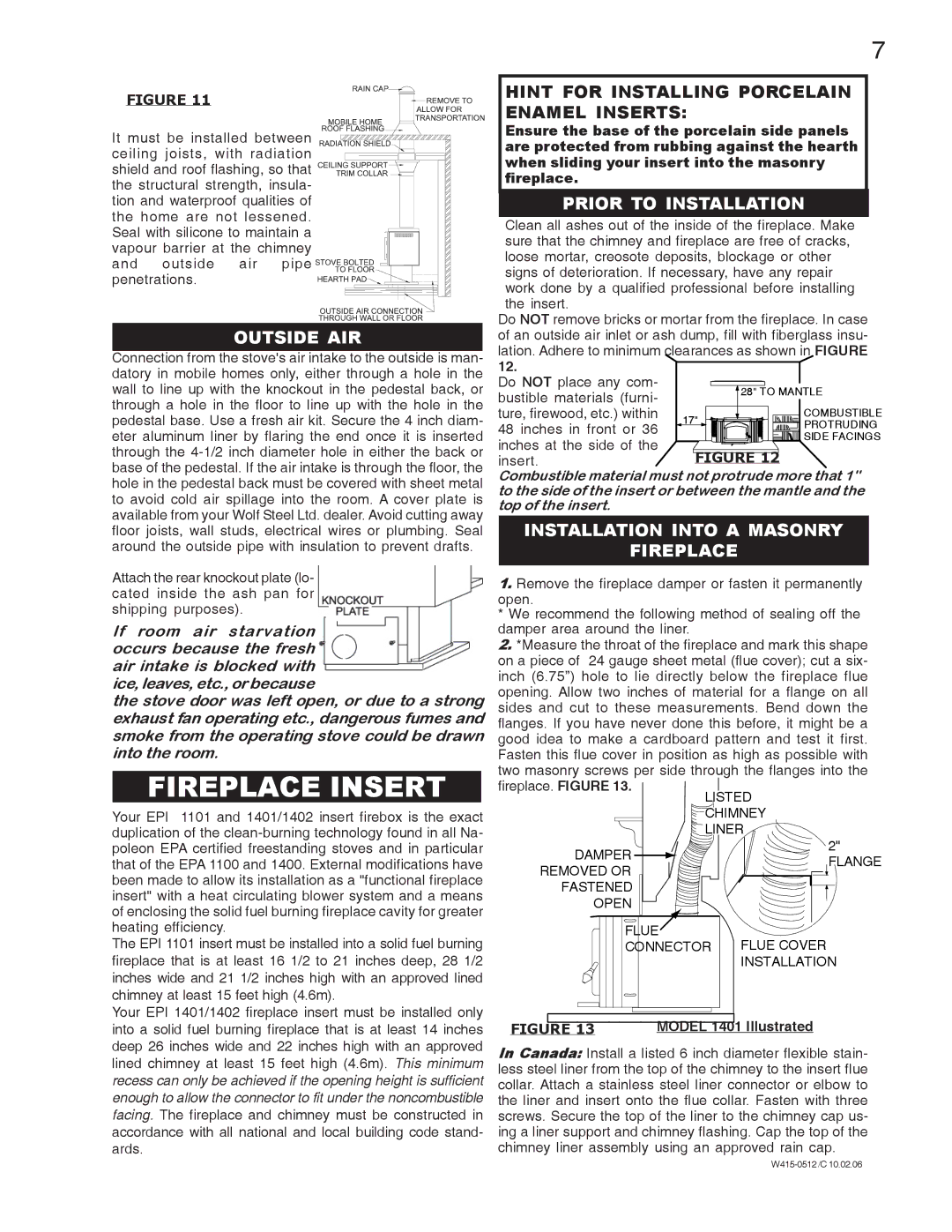EPI 1402, EPA1150, EPA1100C, EPA1400, EPA1900 specifications
Napoleon Fireplaces is renowned for its dedication to quality, craftsmanship, and innovative technology in the heating industry. Among its acclaimed lineup, the EPA1400, EPA1100C, EPA1400L, EPA1100, and EPI 1402 models stand out for their superior performance and eco-friendly design.The EPA1400 is celebrated for its compact size and powerful heating capabilities. This model features advanced Air Wash technology, which keeps the glass clean for unobstructed views of the fire. With a robust firebox, the EPA1400 can accommodate logs up to 18 inches, providing prolonged burn times. The user-friendly design includes an adjustable air control system that optimizes combustion airflow, enhancing efficiency while reducing smoke emissions.
The EPA1100C is another remarkable offering from Napoleon, designed for those seeking an efficient and environmentally conscious heating solution. This model focuses on achieving higher efficiency ratings with its innovative secondary combustion system. The EPA1100C also emphasizes user convenience, featuring easy-to-use controls and a large viewing area to enjoy the flames.
Expanding on the versatility of its product line, the EPA1400L is designed with a longer firebox, making it ideal for longer logs while maintaining optimal heat output. This model maximizes combustion efficiency through its advanced baffle design, which promotes better airflow and even heat distribution. The EPA1400L is particularly well-suited for larger spaces, delivering warmth with minimal environmental impact.
The EPA1100 model stands as a testament to Napoleon's commitment to providing powerful yet efficient heating solutions. This unit combines innovative technology with practical features, including a large firebox and an exterior ash clean-out system that simplifies maintenance.
Lastly, the EPI 1402 epitomizes modern heating technology. This unit is optimized for energy efficiency and reduced emissions without sacrificing style or comfort. The EPI 1402 comes equipped with Napoleon’s patented Ember Bed Lighting, creating a cozy ambiance even when the fire isn’t lit. Its robust thermal mass ensures that heat is radiated steadily over time, making it an excellent choice for any home.
Together, these models represent the fusion of technology and aesthetic elegance, providing homeowners with reliable heating solutions that are both effective and environmentally friendly. Napoleon Fireplaces continues to set the standard in the fireplace industry with its commitment to innovation and customer satisfaction.

